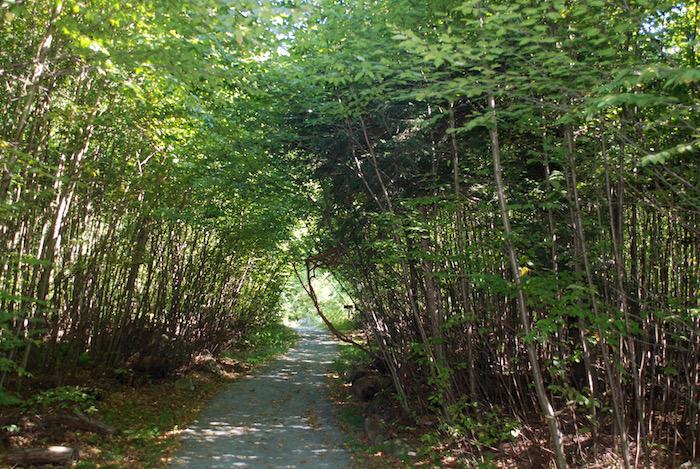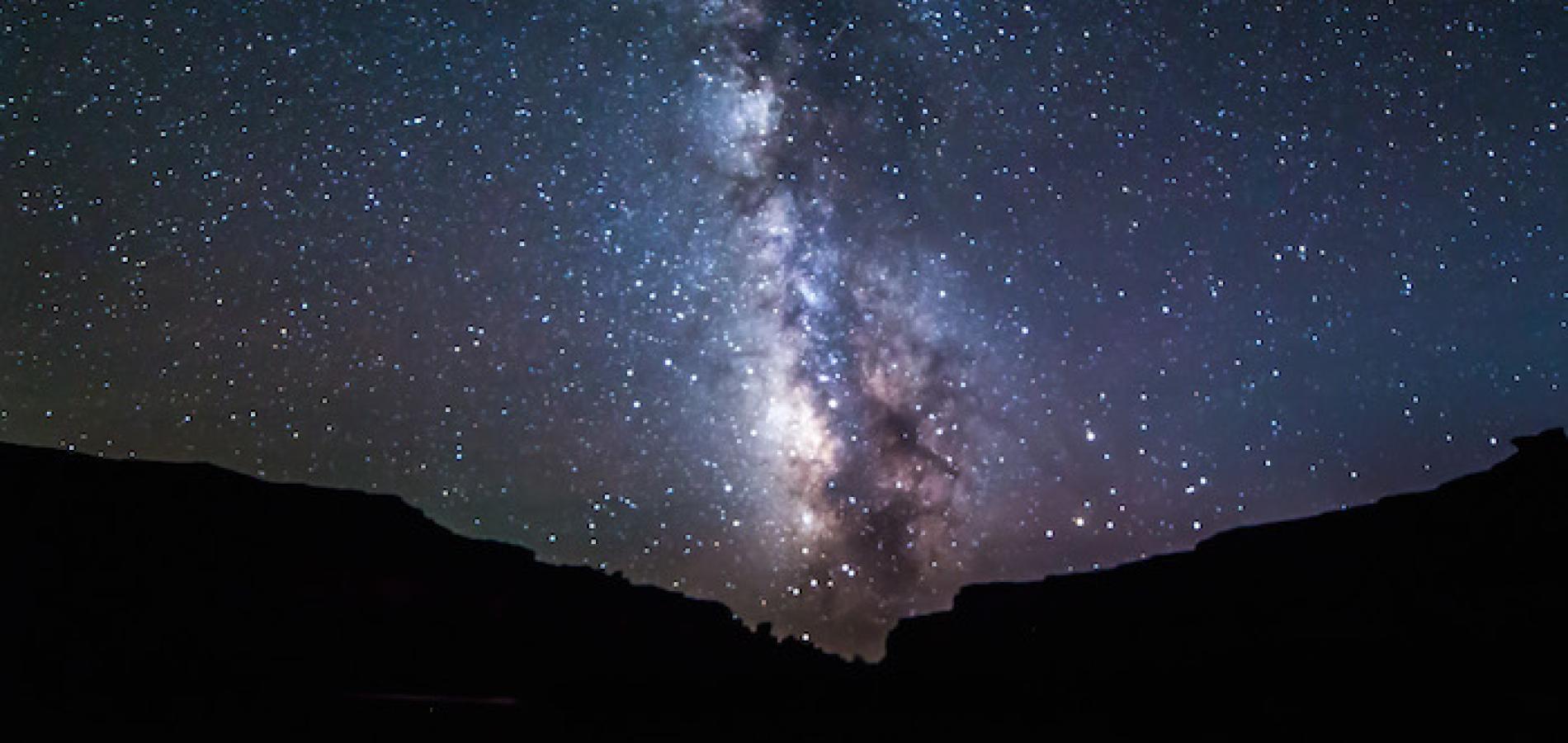Four weeks, three venerable national parks, three entirely different experiences. And time to mull the future of the National Park System and its caretaker, the National Park Service.
From early September through early October I managed a spectacular trifecta, finding time to hike in Shenandoah National Park in Virginia, float through Canyonlands National Park in Utah, and marvel at the night sky above Yellowstone National Park. If anyone still wonders about the value of national parks, retrace the path through any, or all, of these parks and the value will be abundantly clear.
Shenandoah is a park made for hiking, and not just because the Appalachian National Scenic Trail is woven along its crest. There are miles and miles of side trails that lead you down into the Shenandoah Wilderness, to the top of Old Rag, and past cascading waterfalls. Some, too, lead you past the park's last vestiges of hemlock forests, which botanists are striving to save. There are 100-mile-long stands of deciduous trees that help cool the hollows in summer and shed their leaves in a colorful riot each fall. There is rich Appalachian history and lore tucked away into rumpled mountainsides.

A canopy of greenery lines the Limberlost Trail in Shenandoah National Park/Kurt Repanshek
Canyonlands can be a hot, dusty place in September, and maybe it was up on top while we floated through the guts of the park on the Colorado River. Unlike a year ago, when our river trip endured daytime highs in the mid-90s, this year the temperatures were 10-20 degrees cooler, a welcome relief. And with the moon in transition, the starry skies overhead were mesmerizing before we crawled into our tents.
The river corridor is a stark contradiction to the mesas and buttes high above. Here on the park's floor the riparian zone twists and meanders through the basement of the Colorado Basin, giving life to lush vegetation and providing habitat for great blue herons, kingfishers, ringtail cats, beaver, desert bighorns and more.
Yellowstone in early October featured a brush with winter, as 2 inches or so of the white stuff fell the day before my wife and I arrived for four days of relaxing during one of the quietest periods of the year for the park. Hiking down to Shoshone Lake via the DeLacy Creek Trail through the snow-white forest, moved only by occasional breezes, was memorable, as was the next day's hike to Lone Star Geyser via the venerable Howard Eaton Trail.

DeLacy Creek bends and turns on its way to Shoshone Lake/Marcelle Shoop
The Upper Geyser Basin, despite it being the last weekend for the Old Faithful Inn, still attracted crowds, though not as deep as those in August and more prone to heading indoors once the sun set rather than exploring the basin's wonders by starlight via the boardwalk that winds through it. As we were leaving on our last day, housekeeping crews were busy readying the august inn for another winter and its snows and bitter cold.
We expect unerring consistency from the National Park System. When we return to Yellowstone next spring, we want the inn to appear just as we left it six months earlier. We want Shenandoah's forests to unravel a new year of greenery, for the wildflowers to delight our eyes. We look for the Colorado River to be waiting, with adequate flows, for our launch of another river trip.
And, for the most part, that will be the case. But there is change ongoing in the parks, and especially with its caretaker, the National Park Service.
Crowds drawn to the national parks this year, the Park Service's centennial year, overran at least one park. At Zion National Park in Utah, for example, officials continued to struggle with visitation that has been straining staff and impacting resources.

Are too many people flowing into Zion National Park?/NPS
"With increasingly concentrated use and overwhelmed facilities, we are concerned with health and safety issues; diminishing quality of visitor experiences; and associated impacts to soils, vegetation, water, wildlife habitat, soundscapes, and cultural resources," says Zion Superintendent Jeff Bradybaugh.
So concerned is the superintendent about the crush of crowds that a Visitor Use Management Plan now in the works could result on visitation limits. (Public comment on this strategy is being accepted through November 23.)
At Arches National Park, also in Utah, crowds are increasing. As we headed to our Colorado River put-in on the morning of September 26, a Monday, a long line of tailgating traffic waiting to get through the entrance station was backed up to U.S. 191.
At Yellowstone in Wyoming, a social scientist has been added to the park staff to gauge how many visitors are too many visitors.
Crater Lake National Park in Oregon set an annual record for visitation...in September... with 702,050 visitors counted, up nearly 90,000 from 2015's then-record 12-month tally of 614,712. At Acadia National Park in Maine, staff are working on a transportation plan that hopefully will sort out how best to deal with visitor use in the park, particularly at highly popular destinations such as Cadillac Mountain.
With intense visitation through the summer months for the past eighty years, the summit area has sustained substantial loss of soil and vegetation. Several rare plants that inhabit the mountaintop may be threatened. The summit parking area becomes congested with autos and buses at times in the summer, and visitors crowd a short summit walkway and overlooks. Visitors also wander off trail extensively to seek a little privacy, an unobstructed view, a photograph, or simply to explore; for the most part, they are still allowed to freely roam. -- Acadia National Park
Whether the crowds continue to swell in 2017 and beyond, or were a one-time phenomenon this year due to the Park Service's birthday party, remains to be seen. What also remains to be seen is whether the incoming administration and Congress are park friendly. Congressional proposals for new parks, and for park units to be renamed "national parks," would seem to indicate a love for both the park system and its agency. But appropriations continue to flag. From 2005-2014 total funding for the Park Service increased in nominal dollars from $2.7 billion to $3.1 billion, but annual appropriations from Congress actually decreased by 8 percent when inflation was taken into account, the General Accounting Office reported last January.
While the Park Service's current budget is roughly $3.3 billion, the National Park System's weary, broken down infrastructure requires an estimated $12 billion to bring up to standards. Even if that figure is somewhat inflated, half of it is attributed to the poor condition of roads and bridges in the parks. Just one aspect in need of fixing -- Grand Canyon National Park's transcanyon pipeline -- is estimated to cost $100 million if the entire pipeline needs to be replaced.
This past July the Park Service rolled out an economic report, Total Economic Valuation of the National Park Service Lands and Programs, that valued the entire park system at $92 billion, a figure particularly staggering when you realize how relatively little the agency is given to maintain its 84-million-acre landscape.
“I think one of our goals for this project and the release of this report is to get the recognition of the U.S. Congress and the appropriators that the Park Service needs more federal funding," Park Service Director Jon Jarvis said when the report was released.
The dire question that remains dangling is how will the transition in administratons, Congress, and even the National Park Service affect the management of the park system? Neither presidential nominee has gone into any great detail of how they would treat the National Park Service and its kingdom. Members of Congress most recently have shown great disdain for the agency over the matter of sexual and managerial harassment in Yosemite, Grand Canyon, and Yellowstone national parks, as well as at Canaveral National Seashore.
Too, there remains the not unimportant matter of who will succeed Jon Jarvis as director of the Park Service. Who will champion the parks? Who will reverse flagging workforce confidence in their leadership? Is there a plan in place to build on the public's enthusiasm of the centennial year? Who will succeed in getting the public, and the Park Service staff, to accept and believe that the turmoil caused by the stories and innuendo flowing out of some parks are aberrations?
There can be no doubt, in the coming months a strong leadership team, from Interior down through the Park Service, needs to be assembled by the next president and her/his transition team to handle the heavy lifting to ensure the Park Service and its wondrous system builds positively on its centennial year. This goal cannot be trivialized if my grandchildren, and yours, will have as enjoyable visits to Shenandoah, Canyonlands, Yellowstone, and all the other units of the system, as I have had.






 Support Essential Coverage of Essential Places
Support Essential Coverage of Essential Places






